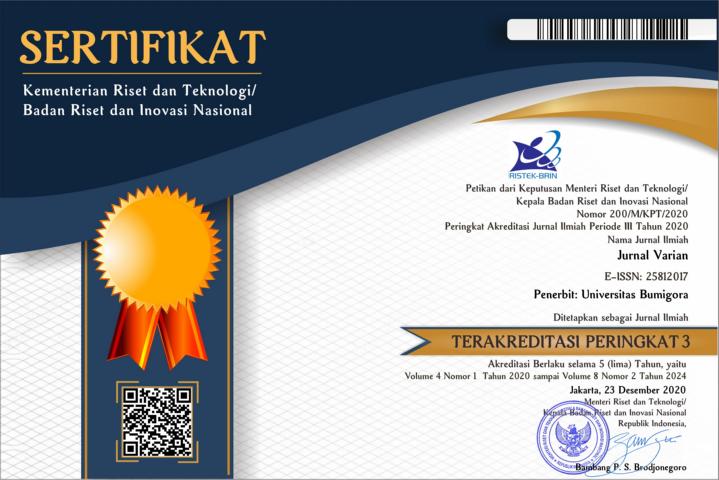Factor Extraction and Bicluster Analysis on Halal Destinations in Lombok Island
Abstract
Indonesia is one of the countries currently developing the concept of halal tourism. Halal tourism includes many variables that are related to each other, which need to be grouped into several main factors that affect tourist visits. This study was conducted to group the variables associated with halal tourism visits to Lombok Island using factor analysis and to classify sub-districts and halal tourism destinations on Lombok Island using the Plaid Bicluster algorithm. Based on the analysis using the main component extraction technique in factor analysis with varimax rotation, it can be concluded that the 9 halal tourism characteristic variables can be grouped into 2 main factors. Furthermore, by using the Plaid Bicluster algorithm, 2 Bicluster were produced. There were 7 sub-districts and 9 destinations formed in Bicluster I, and 8 sub-districts and 3 destinations formed in Bicluster II.
References
Costello, A. B., & Osborne, J. (2005). Best Practices in Exploratory Factor Analysis: Four Recommendations for Getting the Most from Your Analysis. Practical Assessment Research & Evaluation, 10(7), 1–9.
Hair Jr, J. F., Black, W. C., Babin, B. J., & Anderson, R. E. (2010). Multivariate Data Analysis Seventh Edition. New Jersey: Pearson Prentice Hall.
Isah, A., Abdullahi, U., & Waziri, V. O. (2013). A Hierarchical Cluster Analysis and Simulation of State Capitals in Nigeria for Tourism Exploration. International Journal of Latest Research in Science and Technology, 2(1), 437–441.
Johnson, R. A., & Wichern, D. W. (2002). Applied Multivariat Statistical Analysis, Fifth Edition. Prentice Hall Inc., New Jersey.
Komalasari, D. (2014). Analisis Faktor Quartimax dan Cluster Hirarki Centroid pada Program Visit Lombok Sumbawa (VLS). Jurnal Penelitian Unram, 18(2), 89–98.
Lacobucci, D. (2001). Factor Analysis. Journal of Consumer Psychology’s Special Issue on Methodological and Statistical Concerns of the Experimental Behavioral Researcher, 10(1-2), 75–82.
Lazzeroni, L., & Owen, A. (2002). Plaid Models for Gene Expression Data. Statistica Sinica, 12, 61–86.
Mattjik, A. A., & Sumertajaya, I. M. (2011). Sidik Peubah Ganda dengan Menggunakan SAS. Bogor: Institut Pertanian Bogor Press, Bogor.
Suanmali, S. (2014). Factors Affecting Tourist Satisfaction: An Empirical Study in the Northern Part of Thailand. SHS Web of Conferences, 12, 01027.
Subarkah, A. R., Junita Budi Rachman, & Akim. (2020). Destination Branding Indonesia Sebagai Destinasi Wisata Halal. Jurnal Kepariwisataan: Destinasi, Hospitalitas Dan Perjalanan, 4(2), 84–97.
Suyatman, U., Ruminda, & Yatmikasari, I. (2018). Pulau Lombok : Pengembangan Wisata Halal dalam Bingkai Kearifan Lokal. Pusat penelitian dan Penerbitan UIN SGD Bandung.
Taherdoost, H. (2016). Validity and Reliability of the Research Instrument: How to Test the Validation of a Questionnaire/ Survey in a Research. International Journal of Academic Research in Management, 5(3), 28–36.
Zade, A. A. E. (2013). Factor Analysis of Rural Tourism Development from Villagers Viewpoint in Chaharmahalva Bakhtiari Province. International Journal of Agriculture and Crop Sciences, 5(21), 2630–2633.
Zhao, H., Liew, A. W.-C., Wang, D. Z., & Yan, H. (2012). Biclustering Analysis for Pattern Discovery: Current Techniques, Comparative Studies and Applications. Current Bioinformatics, 7, 43–55.

This work is licensed under a Creative Commons Attribution 4.0 International License.


















